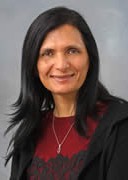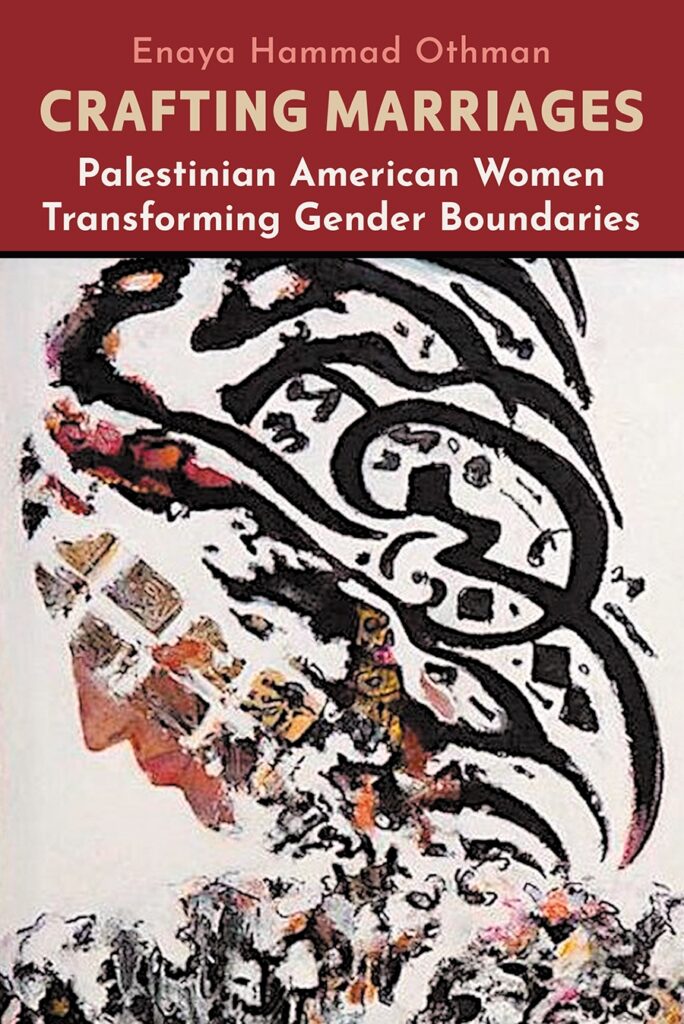April is Arab American Heritage Month. To commemorate the occasion, we’re spotlighting one of our upcoming titles for this spring, Crafting Marriages: Transforming Traditions in the Palestinian American Community by Enaya Hammad Othman with an introduction by the author followed by an excerpt from the title.
Crafting Marriages explores the evolving nature of marriage and gender roles within the Palestinian American diaspora. Drawing on an intersectional feminist framework, the book examines how historical, political, and social forces—including nationalism, colonialism, immigration, and resistance movements—have shaped marriage patterns and women’s agency.

In the context of Palestinian displacement and statelessness, marriage has functioned as both a site of cultural preservation and transformation. Women’s roles within these marriages have been influenced by shifting economic realities, political struggles, and evolving religious and feminist discourses. This book challenges Orientalist portrayals of Palestinian marriage as static and unchanging, instead revealing the ways in which Palestinian American women actively negotiate their identities, relationships, and futures.
Through lived narratives, historical analysis, and engagement with scholarship on Arab American, Muslim American, and Palestinian studies, Crafting Marriages sheds light on the intersections of gender, religion, ethnicity, and diaspora. It highlights the ways in which women exercise agency—whether through cross-border marriages, education, or religious reinterpretation—while navigating the complexities of post-immigration life.
By situating marriage within the broader discourse of nationalism, feminism, and postcolonial theory, this book contributes a critical perspective on the fluid and dynamic nature of Palestinian American family life.
As an immigrant from Al-Bireh, Palestine, I have been listening, observing, and experiencing the dynamics informing identity formation and marriage decisions of the Palestinian American community in Milwaukee, United States for more than thirty years. Like many of these women, migration and marriage were entangled processes for myself and my sisters. After graduating from Birzeit University, the only way for me to further my education was to leave my hometown not only because Birzeit University did not have graduate studies then, but also living under occupation was restrictive in many ways. However, my family refused to let me leave Palestine for education purposes until I would get married. My sisters and I understood that both were inevitable if we were to accomplish our goals. After getting married, I settled in Milwaukee; I have lived among the Palestinian and Arab communities, witnessed 1990s and socialized with many women. My education and activism connecting my research to community in which I live opened my eyes to the intersection of marriage and migration. For many Palestinian women I met in Milwaukee, marriage was the starting point in their individual immigration histories even though the actual motives were much more complex and diverse.

On the other hand, immigration and post-immigration life created new challenges for Palestinians, as has been the case for many other immigrant groups. Being in the United States and experiencing discrimination and Islamophobia which has been intensified following the 9/11 attacks, have amplified in different ways and influenced the identity and belonging, family, and social life. The impact of Islamophobia and discrimination is multifaceted, and it unfolds in a spectrum from weakened affiliation with Palestinian and Muslim cultures and assimilating into mainstream American society as a precaution against discrimination, to stronger attachment to ethnic and religious backgrounds as a reaction to the stereotypical portrayals of Muslim societies. Homeland politics constitute another major factor that shapes Arab and Muslim communities’ articulations of identity and the social contexts they engage in. At times of crises in the homeland, they highlight their ethnic and religious identities, mainly for the purpose of support and solidarity. This is particularly instigated by the activities of Muslim and national organizations which lead to increased membership to and advocacy for/through such institutions. For instance, the popularity and influence of national organizations increase at such times of crises in Palestine and in diaspora. They enforce ethnic-national identity, solidarity, and investment in homeland issues. Yet, in recent decades, the impact and role of religious organizations in Milwaukee have grown in society along with those of national organizations. While some national organizations subsumed under religious organizations or adopted a religious tone, the power of some other homeland organizations such as Al-Bireh Society grew. The mechanism and activities in religious organizations similarly enforce identity unification and solidarity with Arab and Muslim issues such as the Palestinian cause, the cases of Rohingya and Somali, or the Syrian refugee crisis.
The political and humanitarian climate in the Arab world is not in isolation from individual and family lives. The emphasis on unification and affinity ultimately informs socialization and marriage patterns. The dominant community discourses and institutional influence such as national, religious, and transnational organizations reverberate in marriage decisions including the criteria informing the partner choice. In that sense, marriage criteria have become more complex as the community’s identificatory modes are constantly evolving and becoming layered. In this vein, women subscribe to various community discourses depending on the need for negotiation due to their personal choice of marriage partner. The underlying structure of the institution of marriage is itself ever-evolving mainly changing from family alliances to personal choices and desires. Some families among the American Palestinian community in Milwaukee aspire to maintain those forms of alliances that are based on clan and later national interests while others transform those paradigms and only adhere to the ritualistic expression of culture through, among others, wedding ceremonies, clothing, and cuisine. Women actively take part in determining how to cultivate their attachments to their homeland while redefining marriage patterns. In this sense, marriage choices and processes offer a window into many key struggles and social practices among the transnational Palestinian American community. This book is particularly concerned with Palestinian women’s discursive strategies deployed in transforming marriage patterns and acquiring increased agency in marriage decisions.
Crafting Marriages situates the transformations in marriage patterns among Milwaukee’s Muslim Palestinian American community within changing local and global historical contexts. It shows that Palestinian immigrant women who came to the United States between the 1950s and 1980s and the American-born generations who were raised in those decades tend to negotiate identity and marriage in accordance with the local politics (i.e. regional identities within Palestine, economic and social concerns of extended families), national culture, and the Palestinian cause. Marriage and family, for them, continued to signify family and kin relations while increasingly they understood it as a national project. For the later generation who came of age between the 1990s and 2000s, the relationship between identity formation and marital choices is more complicated due to an increasing affiliation with Islamic identity/ institutions as well as American culture along with the national and local considerations.
Preorder Crafting Marriages here.

